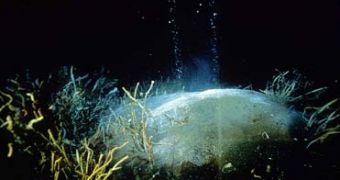The Obama administration might be making considerable efforts towards boosting the US renewables industry, but this does not mean that more traditional energy sources are falling behind on getting significant amounts of attention.
Thus, the country's Energy Department has recently announced that 14 new research projects, which are to be carried out in 11 different states, will receive sufficient funding so as to investigate whether or not methane hydrates could potentially be used to power the nation in the years to come.
For those unaware, methane hydrates are basically ice structures which have natural gas locked inside of them.
Therefore, if science can provide the energy industry with a way to access this resource, countless households and businesses could be powered for hundreds, maybe even thousands of years.
Commenting on these fundings, Energy Secretary Chu made a case of how, “While research on methane hydrates is still in the early stages, these research efforts as part of President Obama’s all-of-the-above energy strategy could potentially yield significant new supplies of natural gas and further expand U.S. energy supplies.”
According to the official website for the US Energy Department, the 14 research projects presently chosen to look into ways of accessing this energy source need to focus on three major issues.
Thus, first of all, the scientists involved in these studies must push for a better understanding of the role of gas hydrates in the natural environment.
Secondly, efforts must be made to identify any potential threats that might begin to manifest themselves as a result of exploiting this energy resource.
Last, but not least, it is essential that the energy industry knows exactly which methane hydrates can successfully be made use of, prior to engaging in any kind of activities having to do with disturbing these ice structures.
“Methane hydrate – molecules of natural gas trapped in an ice-like cage of water molecules – represents a potentially vast methane resource for both the United States and the world. Recent discoveries of methane hydrate in arctic and deep-water marine environments have highlighted the need for a better understanding of this substance as a natural storehouse of carbon and a potential energy resource,” reads one reports published in order to support these researches.

 14 DAY TRIAL //
14 DAY TRIAL //